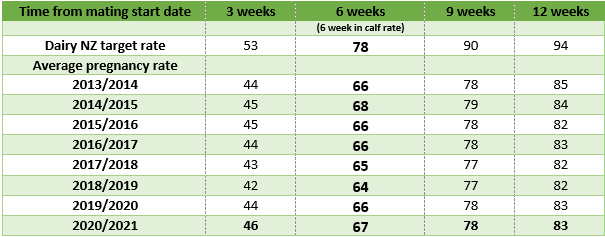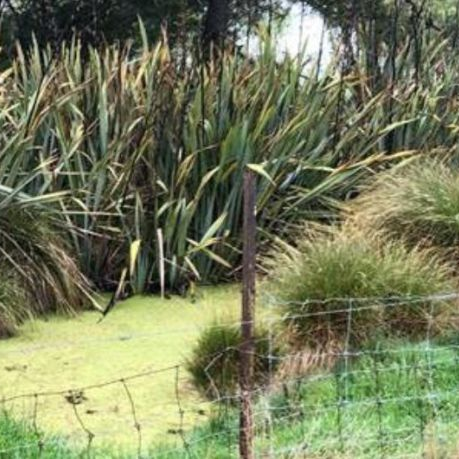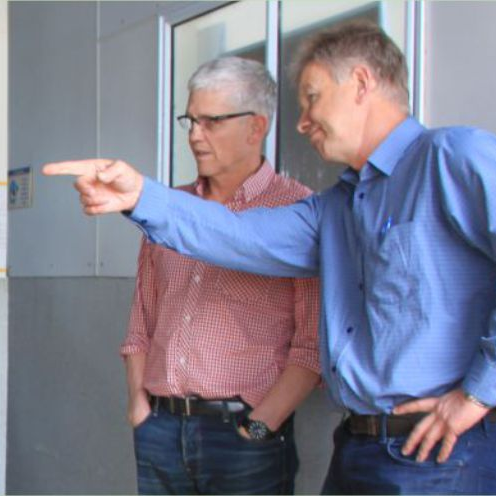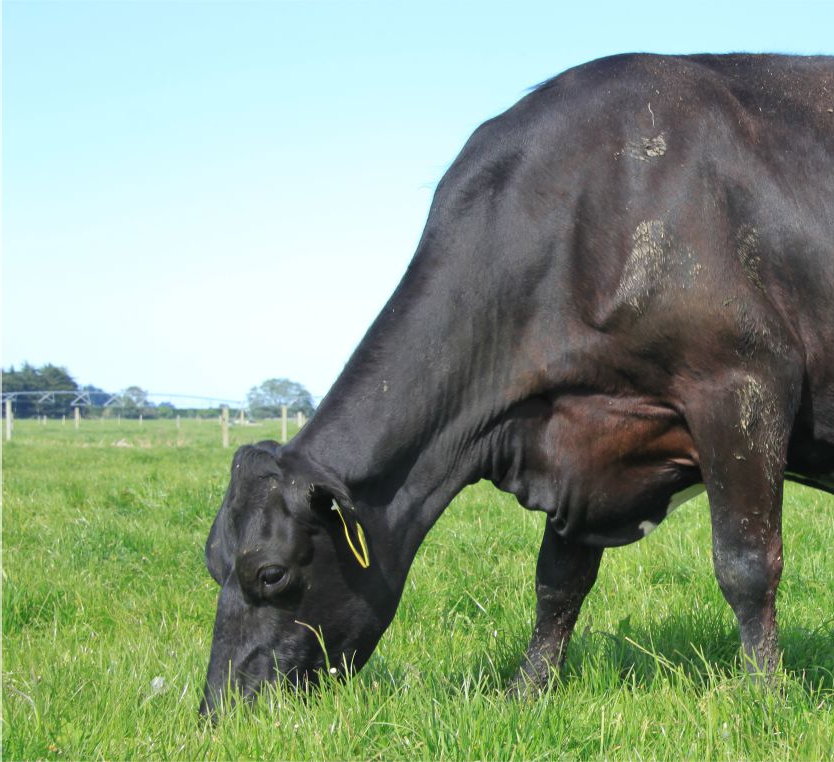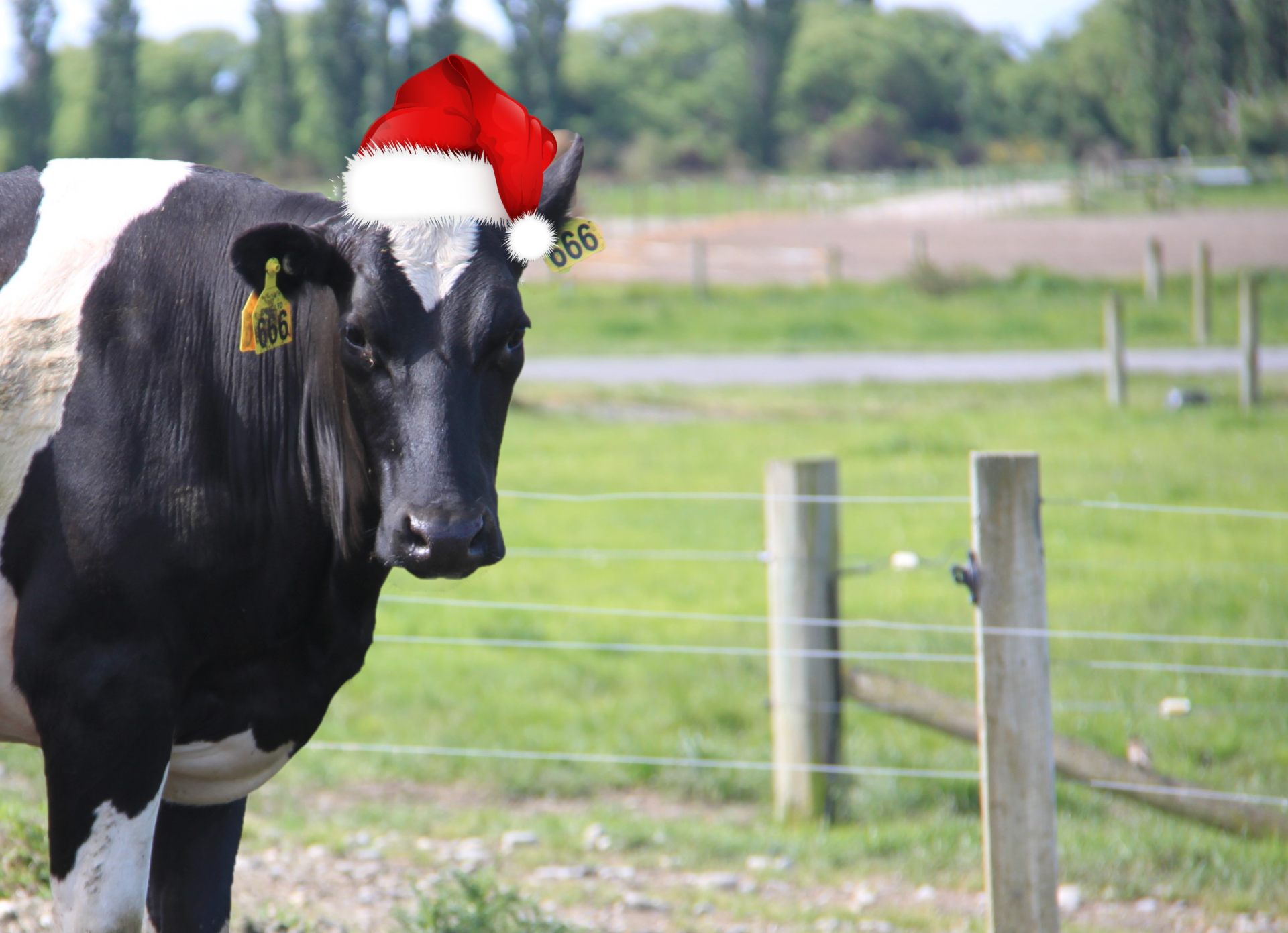
This year has been an interesting one for most however, for many of our clients, it has been business as usual as farming was deemed an essential service during lockdown.
Although many of you would not been able to enjoy an overseas break, we hope you got to explore parts of our own country and give back to the local economy.
While the beginning of 2020 seems like a million years ago, rain in the autumn, and an exceptionally mild winter allowed for good pasture growth so that in August some farmers were making silage. Although October delivered a cold, cloudy and dry month that may have caused some tight feed conditions, hopefully pasture growth rates on most farms have met cow demand with a good dose of rain in November.
Milk prices have also been positive in 2020, with all milk processors paying in excess of $7.00/kgMS for the 19-20 season. Pricing for the 20-21 season started lower but as we reach the end on the year prices have increased and may yet top the $7.00/kgMS hurdle again.
After a kind winter cows generally calved in good condition and the weather in August for calving couldn’t have been any better. With good pasture feed supplies herds were generally very well fed in early spring which was positive for mating.
Improved mating performance was the goal on many farms this spring and most farmers used more targeted intervention in an attempt to achieve better results. Early indications are that most farms have seen some improvement in in-calf rates, and we will hope that 6-week pregnancy scanning in January will confirm this – touch wood!!!!
Though many of you, DFMS included, submitted on the Government’s Essential Fresh Water Package at the end of last year, farmers in 2020 were delivered a disappointing set of new policies and rules outlined in the NPS-FW and NES-FW. This includes a 190 kg N/ha/yr cap, strict winter grazing requirements and restrictions on intensification of land. Although it is still unclear how these rules will be regulated, be prepared to have to make changes to your farm system. Also consider the potential impacts if looking to buy or lease a new farm. We recommend you do your environmental due diligence prior to purchasing, which DFMS can help you with. DFMS were fortunate to present at the Synlait Lead with Pride Field Day in November around practical ways to reduce N fertiliser rates to below 190 kg N/ha/yr. If you would like to know more about our 190 kg recommendations, see the DFMS Spring 2020 newsletter on our website blog, or contact John or Kirsty via our website.
For those of you also in the OTOP and Waimakariri Zones, the added pressure of Plan Change 7 (PC7) of the Canterbury Land and Water Regional Plan may also be playing on your mind. This has recently just been through the hearing process and although we must be positive that the commissioners understand the effects these rules may have on farming and rural businesses, it is important to be mindful that these additional regulations may also impact the way we farm in these zones.
A positive for farms that require a FEP audit and nutrient budget, is that plantain has now been added to Overseer. For those who can manage this alternative pasture in their farm system, there are some significant reductions in N loss to be made if utilised in the right way. For more information on how plantain can reduce your N loss in the future, please go to our website blogwhere Libby Ruddenklau has carried out some modelling on our Canterbury model farm.
With all that said, we at DFMS feel it has been a successful year for farming, with the additional benefit of many New Zealanders recognising that agriculture is a major contributor to our economy, especially when other sectors have not been so successful this year. From all of us at DFMS, we wish a Merry Christmas and Happy New Year to all our customers and associates.

Following an exceptional winter and a very good start to spring, conditions of late have been decidedly average. Cold, dry and a genuine lack of sunshine generally typifies the current climatic condition in Canterbury, dampening what is otherwise a very good season to date. Recent rainfall in most areas has alleviated the dry conditions, all be it momentarily, but slow and inconsistent pasture growth rates continue to cause tight feed conditions on most farms.
Delayed Balance Date
There will be very few, if any, Canterbury dairy farms whose pasture growth rate has consistently met cow demand yet this season. This has seen supplement continue to be fed, waiting for the cloud to clear, the sun come out and the days to warm up. It is crucial to continue to fully feed cows through this period with the highest possible quality feed leading up to peak production and the start of mating.
Fully feeding the herd at present will require a relatively high level of supplement being fed on most farms. If available, target a reasonable level of in-shed feeding (2-3 kg) as this will have lower wastage and generally greater and more consistent energy levels. When feeding silage be sure it has been tested and feed the best quality (ME, CP % digestibility) available. Too often I see silage poorly feed out in the paddock resulting in poor utilisation, high wastage and ultimately higher cost.
With most farms now well into the second-round, crude protein in pastures is not limiting. A pasture sample at this time of year can be a good idea just to check this and monitor energy and macro/micro nutrient levels. Also broadly monitoring protein %, Protein: Fat ratio and Milk Urea levels can be useful with assessing base dietary intake factors.
Round Length.
On many farms pasture quality is generally very good with pre-grazing covers often lower than target, and equally, cows comfortably hitting post grazing residual targets. Resist the temptation to go too fast too soon at the moment. Keep that supplement in to fully feed the herd, but be ready to adjust as things will change quickly when they do. As always, regular monitoring of pasture cover and pasture growth rate is key, at least once a week.
Just around the corner… Mating
Along with improved growth rates … mating is also just around the corner. While planning for mating has already been done, and some early intervention strategies (OAD milking, early CIDRs) are already in place and underway, now is still a good time just to review, and re-check that everything is covered off and in place. Talk to our team if you have any questions or would like a visit to discuss your farms strategies and planning.

Salmonellosis is a bacterial infection that occurs commonly
across New Zealand. The disease causes a range of symptoms including diarrhoea,
abortions, general ill thrift, and death in severe cases. The main cause of
Salmonella outbreaks we have seen in previous years in Canterbury is Salmonella
Brandenburg. Salmonella Brandenburg usually causes outbreaks of abortions and
general sickness, especially in first calvers. This year the disease
laboratories have noticed an increase in Salmonella Bovis morbificans and some
cases of Salmonella Typhimuriam which tend to cause more gut issues.
The Salmonella bacteria are present in the faeces of healthy animals and do not always cause disease. Faeces are likely the largest source of the disease, but infected material such as the placenta and foetus from abortions are also a source. The bacteria can also be spread from farm to farm via wildlife, usually birds and vermin.
Significant disease usually occurs when an animal or group of animals are under significant stress (e.g. calving, severe weather, poor nutrition/trace element supplementation etc.) and their immune system is put under pressure. This drop in immunity combined with ingestion of the Salmonella organism results in clinical disease.
Outbreaks can be severe at times. For first calving heifers there have been reports of up to 35% of the animals aborting and up to a 5% mortality rate. Treatment involves supportive care, primarily aimed at rehydrating the animal and aiding them in fighting the initial infection. Treatment can be effective if initiated early, but it is very costly in terms of time, effort, drugs, and production loss/loss of the pregnancy. Salmonella is also a zoonotic disease (can infect humans) and becomes a significant health and safety issue during an outbreak.
As with any disease, prevention is the best option for Salmonella. As it is naturally present in healthy animals and the bacteria can live for months in pasture, the best choice we currently have for prevention is vaccination. Salvexin + B is a very cost-effective vaccine and gives protection against all three of the Salmonella types mentioned above. We recommend vaccinating all calves at 4-6 weeks old with an initial injection plus a booster, and then this can be followed up with an annual booster vaccination in May. Any naïve yearlings/R2s/adult cattle will also require two initial injections followed up by an annual booster in May (pre dry-off for milking cows).
Salmonella is a significant animal health issue in Canterbury dairy farms and severe outbreaks do occur every year. By minimising stress on your cattle, employing good biosecurity practices, having effective effluent management, and vaccinating all cattle on your property you will significantly reduce the risk of an outbreak. Please give us a call at the clinic if you have any questions and would like to learn more about management of the disease.
Selywn Rakaia Vet Services
Ph: 03 325 4444
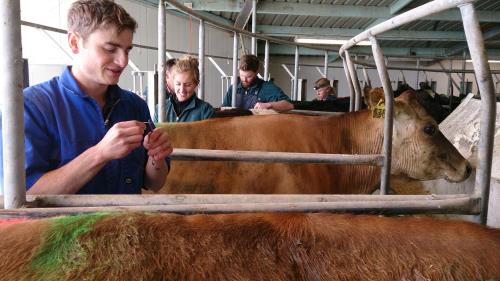
Increasing controls on antibiotic usage
“Antibiotic resistance is one of the biggest threats to global health, food security, and development today.” World Health Organisation
There is increasing international concern about antibiotic resistance. The World Health Organisation (WHO) link below summarises the situation.
https://www.who.int/news-room/fact-sheets/detail/antibiotic-resistance
Antibiotics are used widely in intensive animal farming systems in many countries. In some countries large quantities are used as feed additives especially in feedlots and the pig and poultry industries.
New Zealand’s more extensive farming systems means we are one of the lowest users of antibiotics in livestock production when measured as mg of antibiotic per kg of livestock. We can always do better, hence the drive to further reduce our use of antibiotics.
Some suggestions from the WHO website which are relevant to New Zealand:
-Only give antibiotics to animals under veterinary supervision.
-Not use antibiotics for growth promotion or to prevent diseases in healthy animals.
-Vaccinate animals to reduce the need for antibiotics and use alternatives to antibiotics when available.
-Promote and apply good practices at all steps of production and processing of foods from animal and plant sources.
-Improve biosecurity on farms and prevent infections through improved hygiene and animal welfare.
For specific questions around reducing the use of antibiotics on your farm speak with your vet.
In late 2019, the Government outlined the much-anticipated proposed changes to our national freshwater management framework that were announced last year. DFMS, along with approximately 17,500 others, created a submission which included views similar to DairyNZ and other industry good bodies in the agricultural sector.
Last week the Action for Healthy Waterways Package was released by the Government aimed at managing the health of freshwater in New Zealand and improving environmental practices where needed. Within this Package, more than $700 million has been given in funding to help farmers, iwi/Māori, local government, and communities implement the reform measures.
How could this affect me?
The following summary gives you the main points on what is required as a pastoral dairy/dairy support farm in Canterbury that already has a Farm Environment Plan under the new Action for Healthy Waterways Rules from now to 2025:
Excluding stock from waterways
· Cattle must be excluded from waterways more than 1 m wide from July 2025. Any new fencing that is required to achieve this must be more than 3 m back from the waterway.
· This means existing permanent fences will not have to be moved under the new regulations.
· In addition, cattle will be prohibited from crossing waterbodies more than twice per month unless they cross by way of a dedicated culvert or bridge.
· The regulations will not apply to smaller streams (less than one metre wide), sheep, lower-intensity, hill country farming, or where stock exclusion is impractical due to the physical characteristics of the land or where there are natural barriers keeping stock out of waterways.
Nitrogen Cap
· All pastoral farmers will have to keep synthetic nitrogen fertiliser use below 190 kg N/ha/year by the 2021/22 season or apply for a resource consent.
· From July 2021, all dairy farmers will need to record the tonnages of fertiliser applied and the area it was applied to, this must be reported to the regional council in the year ending 30 June 2022.
· The new cap will apply to fertiliser such as urea, diammonium phosphate (DAP), ammonium sulphate and blends.
· It does NOT include nitrogen sources such as legumes, compost, composted or raw manures, farm-dairy effluent, or blood and bone.
Winter grazing
From winter 2021, you will require a resource consent to graze stock on forage crops if:
· Your paddock is more than 10-degrees in slope.
· The area being planted is either; more than 50 ha or; 10 per cent of the property (whichever is the larger).
· The crop is less than five metres from a waterway.
To continue winter grazing you must also follow Good management practices which can be found on the following website: https://www.dairynz.co.nz/feed/crops/wintering-cows-on-crops/grazing-the-winter-crop/
Intensification
From mid-2020 until the end of 2024, you will require a resource consent to intensify using the following practices:
· Increase irrigation by more than 10 ha;
· Increase forage crop area to above the highest annual amount in the 2014/15–2018/19 seasons
· Increase dairy support activities to above the highest annual amount in the 2014/15–2018/19 seasons
· Convert to a higher intensity land use (such as from sheep and beef farming to dairy farming or forestry into pastoral farming).
Feed pads and stand off pads
Existing feed pads and stand off pads are required to meet minimum standards which include:
· Managing the permeability of the base area so that it is sealed to a minimum permeability standard.
· Collecting, storing and disposing effluent according to regional council regulations or a current discharge permit.
· Situating the stock-holding area at least 50 m away from waterbodies, water abstraction bores, drainage ditches and coastal marine areas.
From winter 2021, you will require a resource consent to add a feed pad, stand-off pad or feed lot on your property (from mid 2021) if it does not meet minimum standards. This does not include wintering barns, milking sheds, sacrifice paddocks, stock yards or calf pens.
Wetlands and streams
· Any wetlands (identified in council plans) and streams are required to be excluded from livestock.
· No draining or development of wetlands or streams is allowed on farms, except in very limited circumstances, starting from mid-2020.
· Work on wetlands for restoration or cultural purposes (including scientific and research) can be completed as long as the effects are no more than minor. However, to put in new structures, or make more than minor changes, a resource consent is required.
· Streams (in urban and rural areas) must not be filled in unless there is no other option and to shift the course of a stream will require a resource consent from the regional council.
Water Usage
· If you have an existing resource consent for irrigation, you will need to measure and report your use electronically using a system to measure water use every 15 minutes and provide electronic records to the regional council daily.
· The introduction of this requirement is being staggered: You must comply within:
- Two years if your consent is to take more than 20 litres per second
- Four years for consents to take between 10 and 20 litres per second
- Six years for consents to take five litres/second or more, but less than 10 litres/second.
What can I do?
You have a year to adjust your farming system to meet most of the requirements. Therefore, talk to one of our consultants at DFMS today or industry representative about how to achieve these restrictions without hindering your farming business .
More information please!
For more information please visit: https://www.mfe.govt.nz/sites/default/files/media/Fresh%20water/action-for-healthy-waterways-information-for-dairy-farmers.pdf

This year has been an interesting one for most however, for many of our clients, it has been business as usual as farming was deemed an essential service during lockdown.
Although many of you would not been able to enjoy an overseas break, we hope you got to explore parts of our own country and give back to the local economy.
While the beginning of 2020 seems like a million years ago, rain in the autumn, and an exceptionally mild winter allowed for good pasture growth so that in August some farmers were making silage. Although October delivered a cold, cloudy and dry month that may have caused some tight feed conditions, hopefully pasture growth rates on most farms have met cow demand with a good dose of rain in November.
Milk prices have also been positive in 2020, with all milk processors paying in excess of $7.00/kgMS for the 19-20 season. Pricing for the 20-21 season started lower but as we reach the end on the year prices have increased and may yet top the $7.00/kgMS hurdle again.
After a kind winter cows generally calved in good condition and the weather in August for calving couldn’t have been any better. With good pasture feed supplies herds were generally very well fed in early spring which was positive for mating.
Improved mating performance was the goal on many farms this spring and most farmers used more targeted intervention in an attempt to achieve better results. Early indications are that most farms have seen some improvement in in-calf rates, and we will hope that 6-week pregnancy scanning in January will confirm this – touch wood!!!!
Though many of you, DFMS included, submitted on the Government’s Essential Fresh Water Package at the end of last year, farmers in 2020 were delivered a disappointing set of new policies and rules outlined in the NPS-FW and NES-FW. This includes a 190 kg N/ha/yr cap, strict winter grazing requirements and restrictions on intensification of land. Although it is still unclear how these rules will be regulated, be prepared to have to make changes to your farm system. Also consider the potential impacts if looking to buy or lease a new farm. We recommend you do your environmental due diligence prior to purchasing, which DFMS can help you with. DFMS were fortunate to present at the Synlait Lead with Pride Field Day in November around practical ways to reduce N fertiliser rates to below 190 kg N/ha/yr. If you would like to know more about our 190 kg recommendations, see the DFMS Spring 2020 newsletter on our website blog, or contact John or Kirsty via our website.
For those of you also in the OTOP and Waimakariri Zones, the added pressure of Plan Change 7 (PC7) of the Canterbury Land and Water Regional Plan may also be playing on your mind. This has recently just been through the hearing process and although we must be positive that the commissioners understand the effects these rules may have on farming and rural businesses, it is important to be mindful that these additional regulations may also impact the way we farm in these zones.
A positive for farms that require a FEP audit and nutrient budget, is that plantain has now been added to Overseer. For those who can manage this alternative pasture in their farm system, there are some significant reductions in N loss to be made if utilised in the right way. For more information on how plantain can reduce your N loss in the future, please go to our website blogwhere Libby Ruddenklau has carried out some modelling on our Canterbury model farm.
With all that said, we at DFMS feel it has been a successful year for farming, with the additional benefit of many New Zealanders recognising that agriculture is a major contributor to our economy, especially when other sectors have not been so successful this year. From all of us at DFMS, we wish a Merry Christmas and Happy New Year to all our customers and associates.

Following an exceptional winter and a very good start to spring, conditions of late have been decidedly average. Cold, dry and a genuine lack of sunshine generally typifies the current climatic condition in Canterbury, dampening what is otherwise a very good season to date. Recent rainfall in most areas has alleviated the dry conditions, all be it momentarily, but slow and inconsistent pasture growth rates continue to cause tight feed conditions on most farms.
Delayed Balance Date
There will be very few, if any, Canterbury dairy farms whose pasture growth rate has consistently met cow demand yet this season. This has seen supplement continue to be fed, waiting for the cloud to clear, the sun come out and the days to warm up. It is crucial to continue to fully feed cows through this period with the highest possible quality feed leading up to peak production and the start of mating.
Fully feeding the herd at present will require a relatively high level of supplement being fed on most farms. If available, target a reasonable level of in-shed feeding (2-3 kg) as this will have lower wastage and generally greater and more consistent energy levels. When feeding silage be sure it has been tested and feed the best quality (ME, CP % digestibility) available. Too often I see silage poorly feed out in the paddock resulting in poor utilisation, high wastage and ultimately higher cost.
With most farms now well into the second-round, crude protein in pastures is not limiting. A pasture sample at this time of year can be a good idea just to check this and monitor energy and macro/micro nutrient levels. Also broadly monitoring protein %, Protein: Fat ratio and Milk Urea levels can be useful with assessing base dietary intake factors.
Round Length.
On many farms pasture quality is generally very good with pre-grazing covers often lower than target, and equally, cows comfortably hitting post grazing residual targets. Resist the temptation to go too fast too soon at the moment. Keep that supplement in to fully feed the herd, but be ready to adjust as things will change quickly when they do. As always, regular monitoring of pasture cover and pasture growth rate is key, at least once a week.
Just around the corner… Mating
Along with improved growth rates … mating is also just around the corner. While planning for mating has already been done, and some early intervention strategies (OAD milking, early CIDRs) are already in place and underway, now is still a good time just to review, and re-check that everything is covered off and in place. Talk to our team if you have any questions or would like a visit to discuss your farms strategies and planning.

